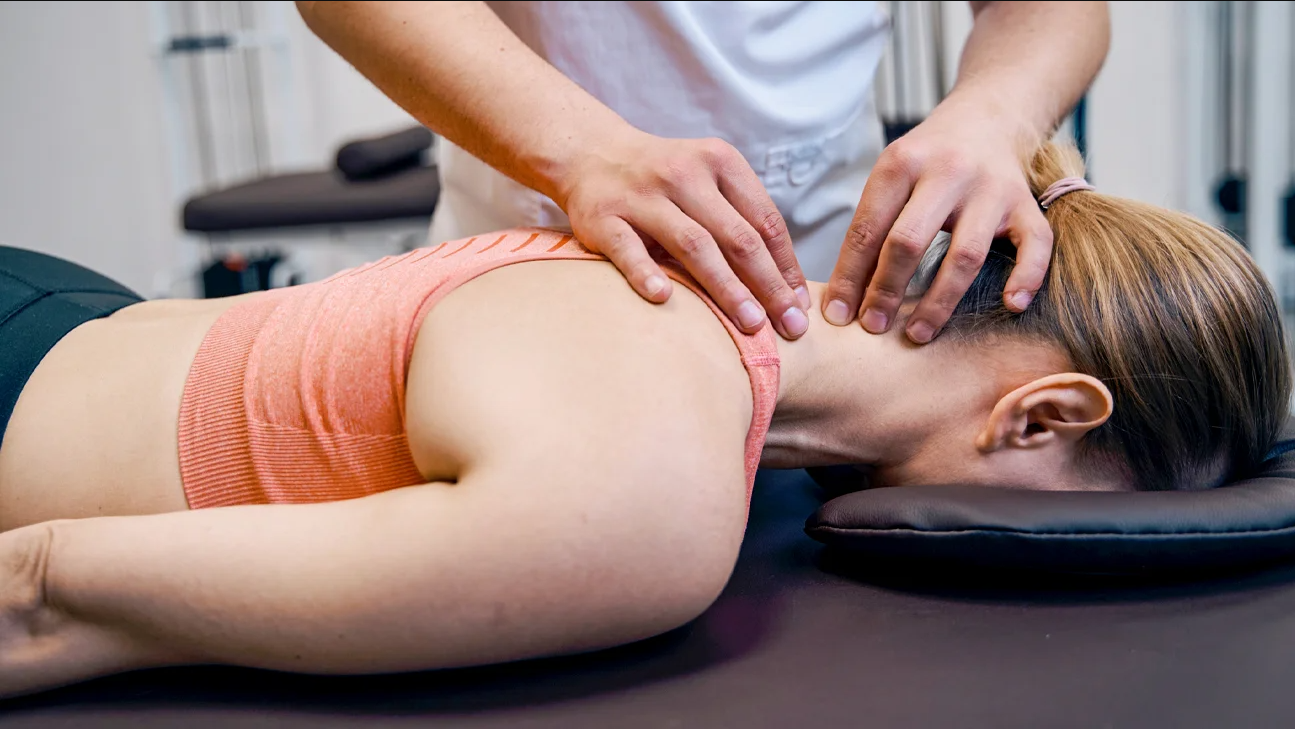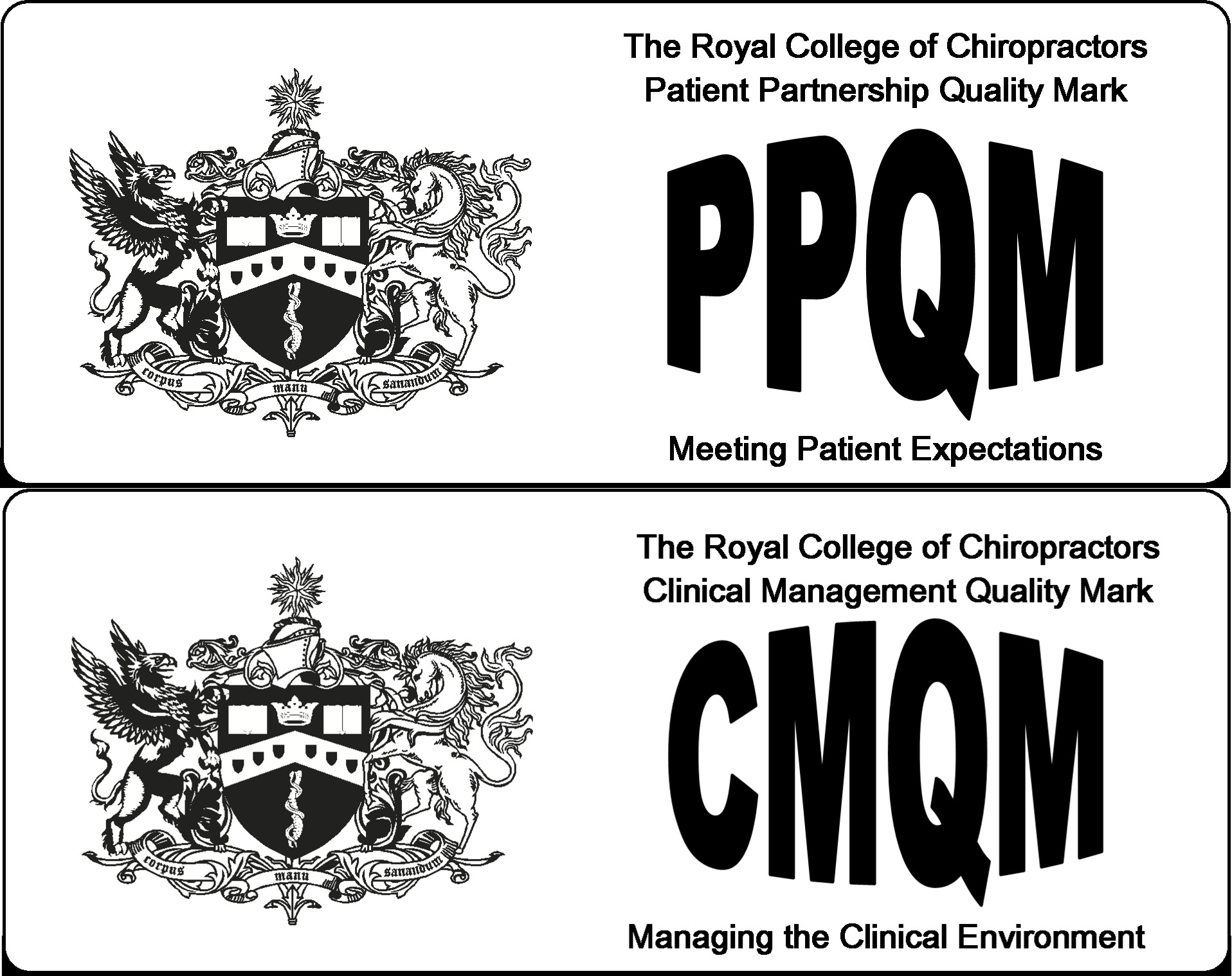Can a Chiropractor Help Migraines? Amersham Patients Share Their Stories
Sarah, a 38-year-old teacher from Chesham, had resigned herself to losing two days each month to debilitating migraines until she discovered our chiropractor for migraines Amersham services at Amersham Chiropractic Centre. Like many seeking headache relief Buckinghamshire clinics provide, she’d tried countless medications with limited success before learning that spinal misalignments in her neck were triggering her migraines. Her story mirrors thousands of patients who’ve discovered that chiropractic care offers a drug-free, long-term solution to chronic migraines by addressing underlying cervical spine dysfunction rather than merely masking symptoms with pharmaceutical interventions.
Understanding the Migraine-Spine Connection
The relationship between spinal health and migraines represents one of medicine’s most overlooked connections, yet research increasingly validates what chiropractors have observed for decades. The upper cervical spine, particularly the atlas (C1) and axis (C2) vertebrae, houses crucial neurological structures that, when irritated by misalignment, can trigger migraine cascades. These vertebrae surround the brainstem and affect blood flow through the vertebral arteries, creating the perfect storm for migraine development when dysfunction occurs.
Cervicogenic headaches, often misdiagnosed as migraines, actually originate from cervical spine problems rather than vascular or neurological issues within the brain itself. The convergence of sensory input from upper cervical nerves with trigeminal nerve pathways in the trigeminocervical nucleus explains why neck problems manifest as head pain. This anatomical crossroad means that irritation from misaligned vertebrae can trigger pain patterns identical to classic migraines, including throbbing, one-sided head pain with nausea and light sensitivity.
The biomechanical stress of modern life significantly contributes to cervical spine dysfunction triggering migraines. Forward head posture from computer work increases upper cervical joint stress by up to 300%, creating chronic irritation of surrounding nerves and blood vessels. This “tech neck” epidemic correlates directly with rising migraine prevalence, particularly among office workers who spend eight-plus hours daily in compromised positions.
Research published in the European Journal of Neurology demonstrated that 70% of migraine sufferers have concurrent neck pain, whilst studies using diagnostic nerve blocks confirmed that cervical dysfunction contributes to headache symptoms in over 50% of chronic migraine patients. These findings underscore the importance of addressing spinal health in comprehensive migraine management rather than focusing solely on pharmaceutical interventions.
Patient Success Stories from Amersham Chiropractic Centre
David’s Transformation: From Weekly Migraines to Monthly Check-ups David, a 45-year-old IT consultant from Great Missenden, suffered weekly migraines for fifteen years before seeking chiropractic care. “I’d tried everything—beta blockers, triptans, even Botox injections—with minimal improvement,” he recalls. Initial X-rays revealed significant atlas subluxation and loss of cervical lordosis from years of poor desk posture. After twelve weeks of targeted adjustments focusing on upper cervical alignment, David experienced his first migraine-free month in over a decade. “I couldn’t believe something as simple as spine alignment was the missing piece. I wish I’d known about this years ago.”
Emma’s Journey: Pregnancy Migraines Resolved Naturally Emma, a 32-year-old marketing manager from Amersham Old Town, developed severe migraines during her second trimester when medication options were limited. “My obstetrician mentioned that some women find relief through chiropractic care, though she seemed sceptical,” Emma shares. Our pregnancy-certified chiropractor identified compensatory patterns from pregnancy-related posture changes affecting her upper cervical spine. Using gentle, pregnancy-safe techniques, we restored proper alignment without medication. “The relief was almost immediate after my first adjustment. I went from three migraines weekly to maybe one mild headache monthly throughout the rest of my pregnancy.”
James’s Athletic Recovery: Concussion-Related Migraines James, a 19-year-old rugby player from Beaconsfield, developed chronic migraines following a concussion. Traditional concussion protocols provided minimal relief after six months. Examination revealed whiplash-induced subluxations throughout his cervical spine that hadn’t been addressed during initial concussion treatment. “The medical team focused entirely on my brain injury, but nobody examined my neck,” James explains. Combining specific adjustments with rehabilitation exercises, his migraines reduced from daily to occasional within eight weeks. “I’m back playing rugby without fear of triggering a migraine. The chiropractic approach looked at the whole picture, not just my head injury.”
Margaret’s Senior Years Success: Medication Reduction Margaret, 68, from Chalfont St Giles, managed chronic migraines with increasing medication doses over forty years. Concerned about long-term medication effects and interactions with other prescriptions, she sought alternatives. “My GP warned that stopping migraine medications might worsen symptoms, but I wanted to try,” she recounts. Gentle mobilisation techniques appropriate for age-related changes, combined with postural exercises, gradually reduced her migraine frequency. “I’ve eliminated two of my three migraine medications and feel clearer-headed than I have in decades. My GP is amazed at the transformation.”
How Chiropractic Treatment Addresses Different Migraine Types
Classic migraines with aura often respond excellently to upper cervical adjustments targeting the atlanto-occipital and atlanto-axial joints. These precise corrections improve cerebrospinal fluid flow and reduce irritation to the vertebral arteries, addressing two potential migraine triggers simultaneously. Our specific protocols for aura-associated migraines focus on restoring proper nervous system function through the brainstem region, where many aura symptoms originate.
Tension-type headaches transitioning into migraines benefit from comprehensive spinal care addressing both cervical and thoracic regions. Poor thoracic spine mobility creates compensatory upper cervical stress, establishing chronic tension patterns triggering migraines. Our integrated approach combines thoracic mobilisation with cervical adjustments, breaking the tension-migraine cycle many patients experience.
Menstrual migraines, whilst primarily hormonal, often improve with chiropractic care due to the spine’s influence on autonomic nervous system balance. The sympathetic nervous system, regulated partially through spinal nerve function, affects hormone regulation and stress response. Regular adjustments throughout the menstrual cycle help maintain nervous system balance, reducing migraine susceptibility during hormonal fluctuations.
Cluster headaches, though distinct from migraines, sometimes respond to specific upper cervical techniques targeting the sphenopalatine ganglion’s nerve connections. Whilst not all cluster headaches have spinal components, those with concurrent neck dysfunction often experience significant improvement through targeted chiropractic intervention.
How to Prevent Migraines: Comprehensive Prevention Strategies
Spinal Health Maintenance
- Regular chiropractic check-ups: Monthly adjustments maintaining optimal cervical alignment
- Daily neck exercises: Gentle stretches and strengthening preventing subluxation recurrence
- Posture correction drills: Hourly posture resets countering forward head positioning
- Ergonomic optimisation: Workstation adjustments reducing cervical spine stress
- Sleep position modification: Proper pillow support maintaining neutral spine alignment
Lifestyle Modifications
- Trigger identification and avoidance: Documenting patterns revealing individual triggers
- Stress management techniques: Meditation, breathing exercises reducing nervous system activation
- Regular sleep schedule: Consistent bedtime/wake times stabilising circadian rhythms
- Exercise routine: Moderate aerobic activity improving circulation without overexertion
- Screen time management: Regular breaks reducing eye strain and neck tension
Nutritional Interventions
- Hydration protocols: Minimum 2 litres daily, increased during trigger exposures
- Anti-inflammatory diet: Omega-3 rich foods, vegetables reducing systemic inflammation
- Trigger food elimination: Avoiding common triggers like aged cheeses, processed meats
- Magnesium supplementation: 400-600mg daily supporting muscle relaxation and nerve function
- Regular meal timing: Preventing blood sugar fluctuations triggering migraines
Environmental Controls
- Light management: Blue light filters, appropriate workspace lighting reducing strain
- Noise reduction: Noise-cancelling headphones or white noise managing auditory triggers
- Temperature regulation: Maintaining consistent environments avoiding extreme changes
- Air quality improvement: HEPA filters reducing allergen and pollutant exposure
- Workplace modifications: Standing desk options, document holders reducing neck strain
Why Chiropractic Is Better Than Medication Alone
Chiropractic care addresses migraine root causes rather than temporarily suppressing symptoms like medications do. Whilst pharmaceuticals may provide temporary relief, they don’t correct underlying spinal dysfunction perpetuating migraine cycles. Our chiropractor for migraines Amersham approach identifies and resolves mechanical triggers, providing lasting relief without medication dependency or side effects.
Medication overuse headaches represent a significant problem for chronic migraine sufferers, with regular analgesic use actually increasing headache frequency. Studies indicate that 30% of chronic migraine patients develop medication overuse headaches, creating dependency cycles difficult to break. Chiropractic care offers an exit strategy from this cycle, providing natural relief whilst gradually reducing medication reliance under medical supervision.
The side effect profile of migraine medications often rivals the condition itself. Beta-blockers cause fatigue and depression, anti-seizure medications affect cognitive function, and triptans carry cardiovascular risks. Chiropractic adjustments produce no systemic side effects, with temporary mild soreness representing the only common reaction. This safety profile makes chiropractic particularly valuable for patients unable to tolerate medications.
Pharmaceutical interventions don’t address the postural and biomechanical factors perpetuating migraines. Poor ergonomics, muscle imbalances, and movement dysfunctions continue despite medication use, ensuring migraine recurrence once drugs wear off. Our comprehensive approach corrects these maintaining factors whilst providing immediate relief through adjustments.
Cost-effectiveness strongly favours chiropractic care for long-term migraine management. Whilst monthly medication costs accumulate indefinitely, chiropractic treatment typically involves an initial correction phase followed by less frequent maintenance care. Patients report saving thousands annually on medications whilst enjoying better overall health through improved spinal function.
How to Fix Migraines: Comprehensive Chiropractic Protocols
Initial Assessment and Diagnosis
- Detailed migraine history: Frequency, triggers, patterns, and previous treatments documented
- Postural analysis: Digital assessment identifying forward head posture and spinal curves
- Cervical spine examination: Motion palpation identifying specific subluxation patterns
- Neurological screening: Testing cranial nerves and upper limb reflexes
- X-ray analysis: Assessing cervical alignment, degenerative changes, and structural abnormalities
Acute Migraine Management
- Gentle mobilisation techniques: Light touch adjustments appropriate during active migraines
- Occipital release: Soft tissue techniques reducing suboccipital muscle tension
- Trigger point therapy: Addressing referral patterns contributing to head pain
- Ice therapy protocols: Strategic application reducing inflammation and pain
- Breathing exercises: Vagus nerve stimulation techniques aborting migraine progression
Corrective Care Phase
- Specific upper cervical adjustments: Atlas and axis corrections using precise vectors
- Cervical curve restoration: Exercises and traction restoring lordotic curve
- Thoracic spine mobilisation: Addressing compensatory patterns affecting neck function
- TMJ assessment and treatment: Correcting jaw dysfunction contributing to headaches
- Postural rehabilitation: Progressive exercises establishing proper head positioning
Advanced Treatment Techniques
- Toggle recoil technique: High-velocity upper cervical adjustments for complex cases
- Instrument-assisted adjustments: Activator methods for sensitive patients
- Cranial techniques: Gentle craniosacral therapy addressing dural tension
- Dry needling: Releasing deep cervical trigger points maintaining headache patterns
- Cold laser therapy: Reducing inflammation and promoting tissue healing
Long-term Management Strategies
- Maintenance adjustment schedule: Individualised frequency preventing migraine recurrence
- Home exercise programmes: Daily routines maintaining cervical mobility and strength
- Lifestyle counselling: Personalised strategies addressing individual triggers
- Stress management training: Techniques preventing tension accumulation
- Progress monitoring: Regular reassessments tracking improvement and adjusting protocols
Experience the Benefits of Chiropractic Care Today
Understanding Treatment Expectations and Timelines
Realistic expectations enhance treatment satisfaction and compliance. Initial relief often occurs within the first few adjustments, though establishing lasting results typically requires 8-12 weeks of consistent care. The acute relief many patients experience shouldn’t discourage completing corrective care phases essential for preventing recurrence.
Treatment frequency varies based on chronicity, severity, and individual response. Acute sufferers might need twice-weekly visits initially, reducing to weekly then fortnightly as improvement occurs. Maintenance care frequency depends on lifestyle factors, stress levels, and tendency toward subluxation recurrence. Some patients maintain migraine freedom with monthly adjustments whilst others need fortnightly care.
Healing reactions occasionally occur as the body adapts to corrected alignment. Temporary symptom changes, including brief headache intensification or location shifts, indicate nervous system recalibration rather than treatment failure. These reactions typically resolve within 48-72 hours, followed by significant improvement.
Progress monitoring uses both subjective and objective measures. Migraine diaries track frequency, intensity, and duration changes whilst postural photographs document structural improvements. Many patients report additional benefits including improved sleep, reduced neck pain, and enhanced mental clarity alongside migraine relief.
Integration with existing medical care ensures comprehensive management. We communicate with GPs and neurologists, providing treatment summaries and progress reports. This collaborative approach ensures coordinated care, particularly when medication reduction requires medical supervision.
Special Populations and Considerations
Children with migraines respond exceptionally well to gentle chiropractic care, often achieving complete resolution faster than adults. Paediatric migraines frequently stem from birth trauma or falls affecting upper cervical alignment. Our paediatric-trained chiropractors use age-appropriate techniques ensuring safety whilst effectively addressing dysfunction. Parents report improved school performance, behaviour, and sleep alongside migraine resolution.
Pregnancy-related migraines require modified approaches accommodating physiological changes and foetal safety. Hormone fluctuations combined with postural adaptations create perfect conditions for migraine development. Our Webster-certified practitioners provide safe, effective relief using specialised tables and techniques. Many women experience their first migraine-free pregnancy through regular chiropractic care.
Post-traumatic migraines following motor vehicle accidents or head injuries need careful assessment distinguishing primary injury effects from secondary spinal dysfunction. Whiplash-associated disorders commonly trigger chronic migraines through cervical spine injury. Our trauma-focused protocols address both immediate symptoms and long-term complications preventing chronic migraine development.
Elderly patients with decades-long migraine histories often assume nothing can help after years of failed treatments. Age-appropriate techniques accommodating degenerative changes and osteoporosis provide surprising relief. Many elderly patients reduce or eliminate medications they’ve taken for decades, improving overall quality of life whilst managing migraines naturally.
The Complete Wellness Approach
Our headache relief Buckinghamshire programmes extend beyond spinal adjustments to encompass complete wellness strategies. Stress represents a major migraine trigger that chiropractic care alone cannot fully address. We provide stress management workshops teaching practical techniques patients implement daily. These skills complement spinal care, addressing psychosocial factors maintaining migraine patterns.
Nutritional guidance supports optimal nervous system function and reduces inflammatory triggers. Our nutritional protocols identify individual food sensitivities whilst ensuring adequate intake of migraine-preventing nutrients. Patients receive personalised meal plans and supplement recommendations based on their specific needs and triggers.
Exercise prescription balances the benefits of physical activity with avoiding exercise-induced migraines. We design programmes building cardiovascular fitness and strength without triggering symptoms. Specific neck and shoulder exercises maintain adjustment benefits between visits whilst improving overall resilience.
Sleep optimisation addresses both migraine triggers and consequences. Poor sleep triggers migraines whilst migraines disrupt sleep, creating vicious cycles. Our sleep hygiene protocols, combined with proper spinal alignment, help patients achieve restorative sleep essential for migraine prevention.
Conclusion
The question “Can a chiropractor help migraines?” receives a resounding yes from thousands of patients who’ve found lasting relief through spinal care. Our chiropractor for migraines Amersham services at Amersham Chiropractic Centre provide evidence-based, natural solutions addressing root causes rather than masking symptoms. Patient stories demonstrate that regardless of age, migraine type, or previous treatment failures, chiropractic care offers hope for those seeking drug-free relief.
The neurological connections between cervical spine health and migraine generation validate chiropractic’s role in comprehensive migraine management. By correcting upper cervical subluxations, restoring proper posture, and addressing maintaining factors, we break migraine cycles that medications alone cannot resolve. Our integrated approach combining specific adjustments with lifestyle modifications provides the complete solution many migraine sufferers have sought for years.
For those seeking headache relief Buckinghamshire clinics provide, Amersham Chiropractic Centre offers more than temporary symptom management. We provide lasting solutions through addressing underlying spinal dysfunction, empowering patients with self-management strategies, and supporting overall wellness. Our patient success stories reflect not just migraine relief but transformed lives free from the fear and limitations chronic migraines impose.
Don’t let migraines continue controlling your life, limiting your activities, or forcing medication dependence. Whether you’ve suffered for decades or recently developed migraines, professional chiropractic assessment can identify spinal factors contributing to your pain. Contact Amersham Chiropractic Centre today to schedule your comprehensive migraine assessment. Join the thousands who’ve discovered that natural, lasting migraine relief is possible through expert chiropractic care. Your journey from migraine sufferer to success story begins with understanding that spinal health and head pain are intimately connected—and that connection holds the key to your recovery.






